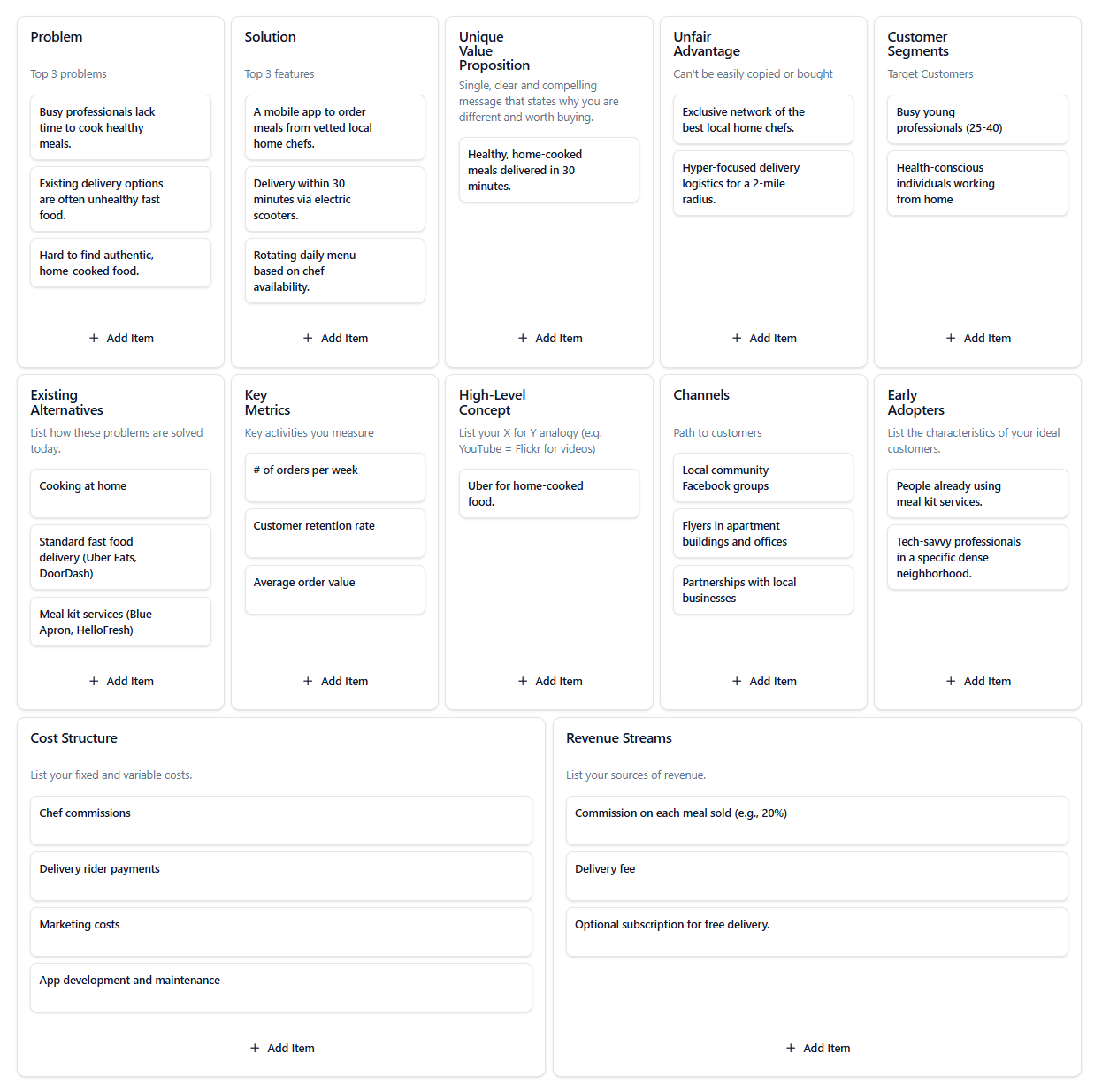Local Services
Hyper-Local Meal Delivery
A service that delivers healthy, home-cooked meals from local chefs to people within a 2-mile radius.

Analysis & Interpretation
Background
This Lean Canvas outlines a hyper-local approach to the crowded food delivery market, aiming to differentiate through a focus on healthy, home-cooked meals. The strategy hinges on solving the ‘time vs. health’ trade-off for busy professionals. This analysis examines the core assumptions and viability of this model.
Key Strategic Insights
- Strong Problem-Solution Fit: The ‘Solution’ (fast, healthy, home-cooked meals) directly addresses the ‘Problem’ (unhealthy, time-consuming options). The ‘Unique Value Proposition’ clearly articulates this fit.
- Unfair Advantage is Operational: The ‘Unfair Advantage’ is not a single feature, but an operational focus: building an ‘exclusive network of local chefs’ and optimizing ‘hyper-focused delivery logistics’. This is a strong, defensible position if executed well.
- Riskiest Assumption: The biggest risk lies in the ‘Channels’ and ‘Customer Segments’. The assumption is that low-cost channels like ‘Facebook groups’ and ‘flyers’ will be effective in acquiring the target segment of ‘busy professionals’. This needs to be tested immediately.
Strategic Summary
This is a promising niche strategy that avoids direct competition with giants like Uber Eats by changing the core value proposition. The immediate priority must be to validate the customer acquisition strategy. The team should run small-scale experiments in a single neighborhood to test if they can acquire ‘Early Adopters’ profitably before investing in scaling the operational side (chefs and riders).
How This Canvas Was Made
This example highlights how different tools work together to turn an idea into a well-structured plan. Below are the main steps in the process:

AI Concept Drafting
The AI Assistant helped form the initial outlines for the Problem and Key Metrics areas, ensuring the foundation was both focused and practical.

Organizing for Clarity
Color highlights were applied to group similar business functions, while labels were added to connect related components across sections.

Refinement with AI Review
When the layout was complete, the AI Review feature analyzed the model and emphasized the Customer Relationships block as a part worth refining further.
Explore the Example
Open this canvas inside the app to explore how it was created. Adjust ideas, test AI insights, and experience how small changes can lead to better business alignment.
